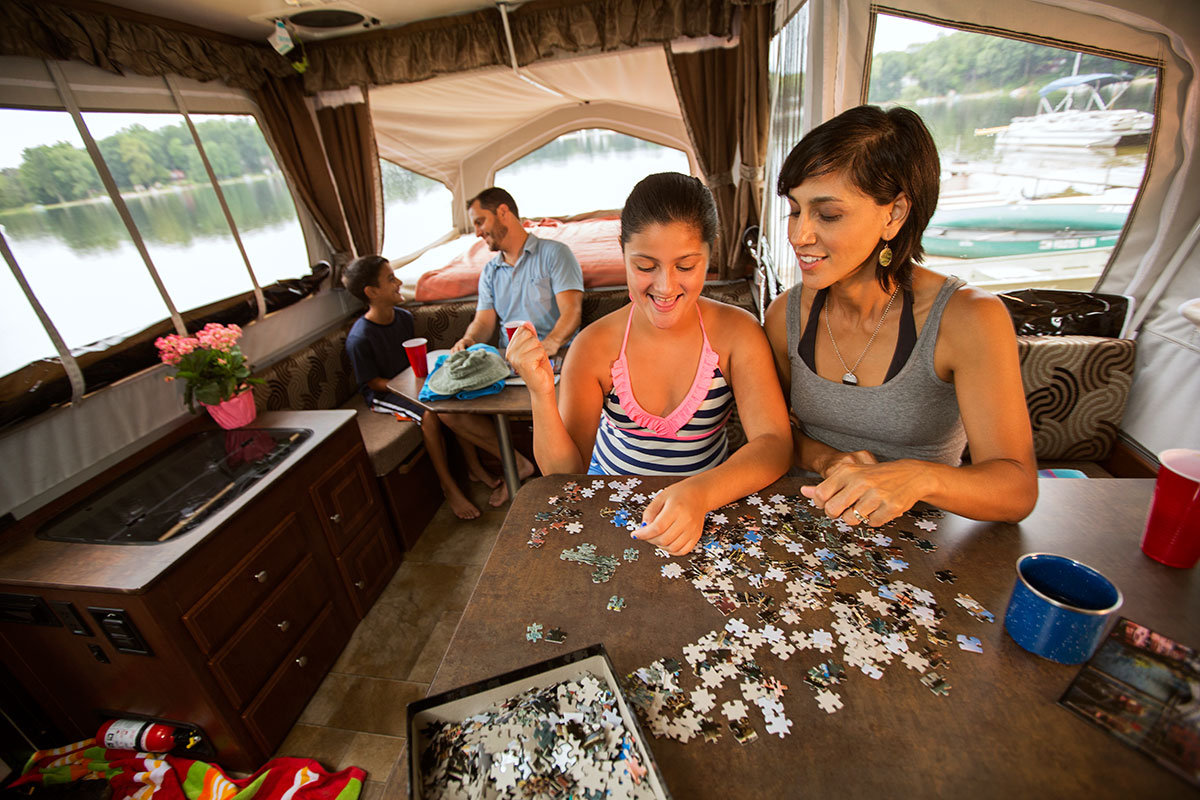Transitions are a part of life, and that applies to RVs, too. The recreation vehicle that used to be the perfect size or the perfect layout is no longer useful, large enough, small enough, or ideal for the type of camping you want to do.
Now you’re faced with the decision to sell. This time between Christmas and camping season is the ideal time to sell and buy. So, how do you go about it if you want to sell it on your own?
The pros and cons of selling on your own.
RVs are like cars. You’ll get more money for it if you sell it privately and get closer to the NADA average retail value. That’s the biggest upside. If you’re selling on your own, you need to market your RV, handle showings, and handle the transfer of documents/funds on your own. If you want to skip this hassle, then going through a dealer might be a better option for you (and we have several member dealers who would love to help you out). Another “con” is that you may need to wait a while until it sells, whereas going through a dealer is more immediate.
Decide on a price.
Use online calculators such as the one available at RVT.com (https://www.rvt.com/price-checker/?searched=true) to estimate your RV’s Check various NADA sources, too. Choose a reasonable price so that it is more likely to sell if you’re selling on your own. You can also get an idea of what the trade-in value would be should you approach a dealer.
Make fixes.
You may have been able to live with a cracked vent or a leaky faucet, but those won’t make a good impression on your potential buyers. You want your RV to be as pristine as possible to show well. You don’t need to do a complete interior remodel, and older RVs tend to look just that, but make sure the RV is clean, free of dirt, and glaring issues are already fixed. Get rid of any odors, too, out of carpets and other fabrics and scrub those surfaces until they look squeaky clean. Replace light bulbs. If you’ve been storing your RV, bring it out and give it a thorough scrub. Remember, first impressions are everything!
Write a crackerjack description.
You need to be accurate and complete in your descriptions and photos. Include the mileage, recent repairs, how many it can sleep, the tow weight (if a trailer), and features. Be honest about anything that needs fixing, any modifications or any upgrades you’ve done. Incorporate into the description whether dogs or cats also called the RV “home,” and whether it’s been smoked in regularly. Include as many photos as possible. State the selling price and whether it’s negotiable or firm. Most importantly, take time to craft your description. Make sure everything is spelled correctly and that the ad looks professional (i.e., skip the all caps).
Get the word out.
You can take an ad out in the local newspaper (for a fee) or use free marketplaces such as Facebook Marketplace and Craigslist.. There are RV-specific selling and buying websites as well: RVT (free) and RV Trader (fee) are both solid options. Camping World also offers listings. Once you have a listing, share the link on your social media profiles and email friends to let them know you are selling. One of them may be interested!
Show it off.
Move your RV to an accessible location, such as the driveway, and out of any barns or garages so that buyers can take a thorough look inside and out. Make the interior look inviting, such as staging some homey details such as flowers or throw pillows. Add a new rug on the step or just inside the door. You want buyers to be able to envision spending time here, and adding a few little details can help. That being said, don’t have too many things laying around as it could make the RV look cluttered. If your RV is motorized, will you allow the potential new owner to go for a test drive? Already know the answer to that before you start showing off the RV.
Be prepared.
Be ready to answer any questions regarding the RV’s maintenance or travel history. Have all the necessary paperwork handy, including all maintenance records and owners’ manuals, in a folder or binder. If you have cords or hoses for various components of the RV, have them nicely tucked away in the RV or nicely arranged and labeled in a portable bin so that you can easily hand it off to the new owner.
Good luck on selling your RV!

